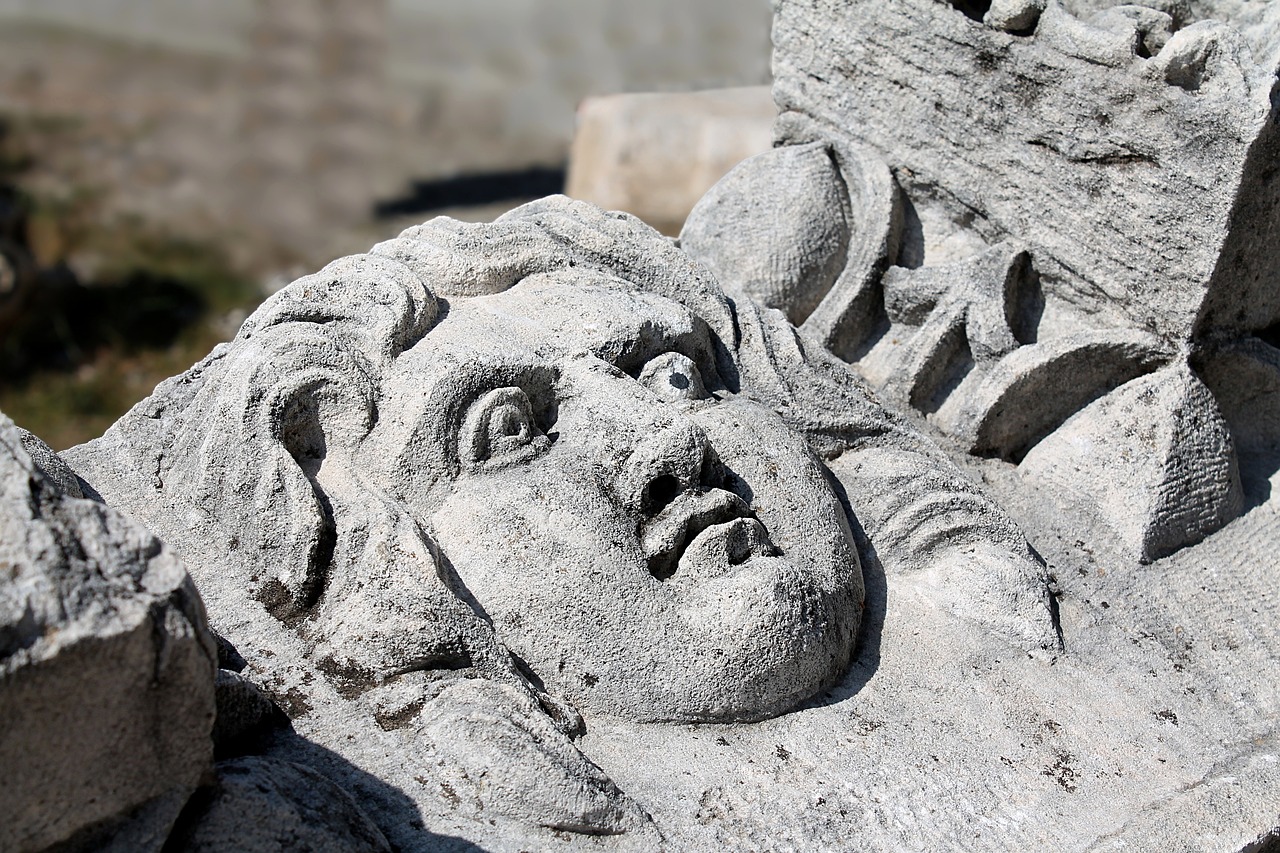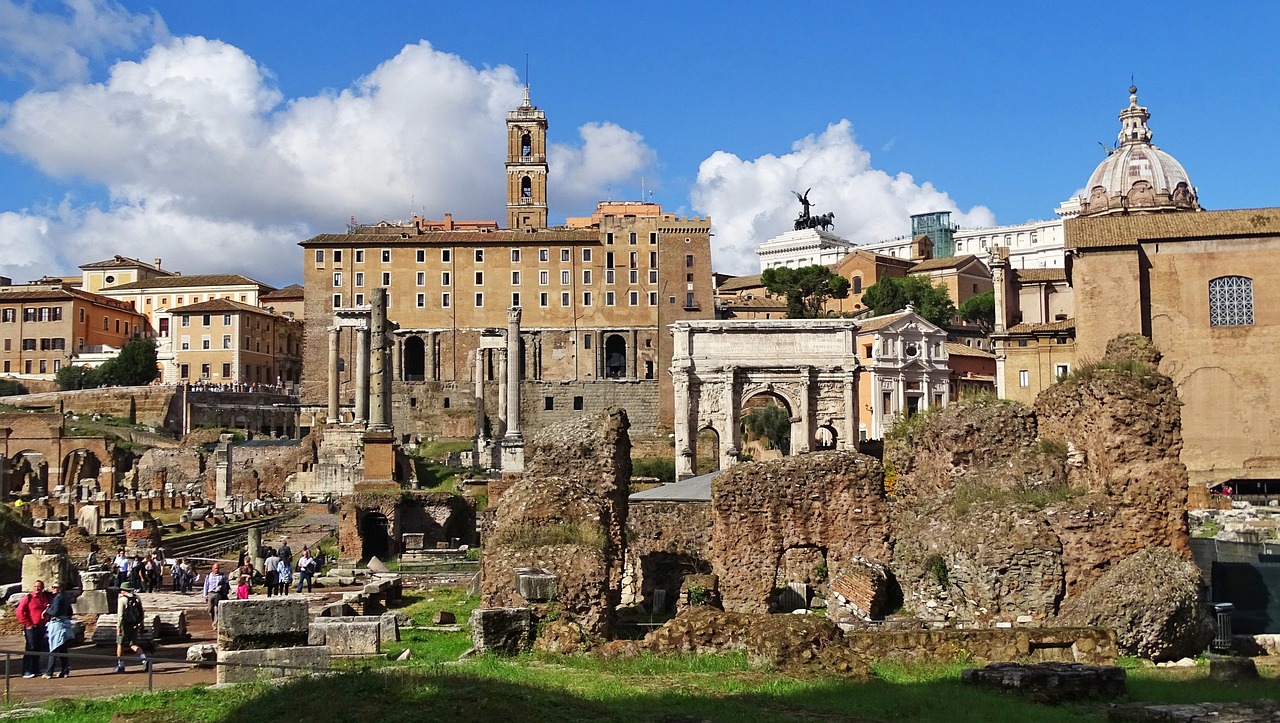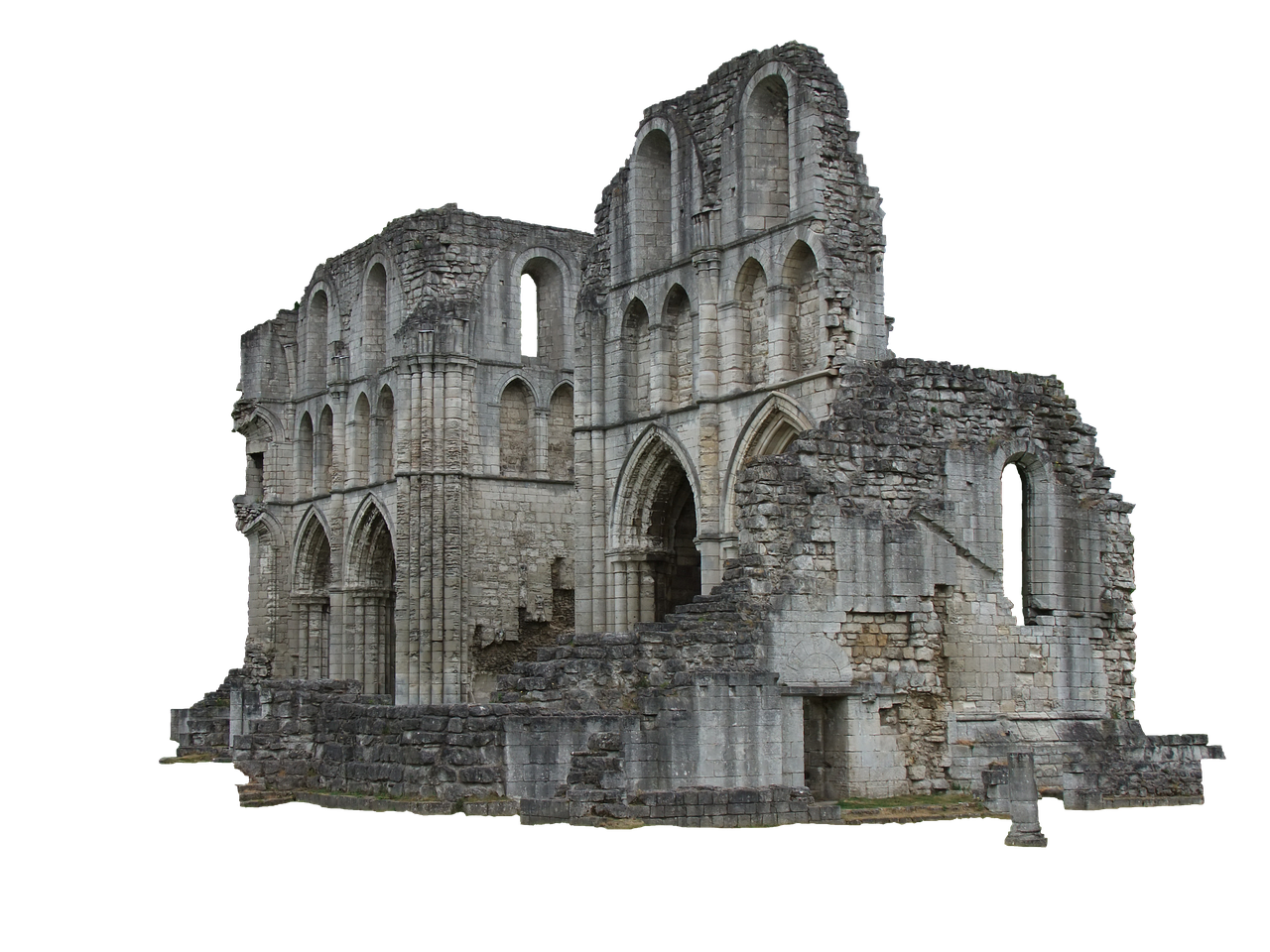The Discovery of the Ancient Roman Provinces
Ancient Roman provinces were not just geographical regions; they were the beating heart of a vast empire that once ruled the known world. These provinces held the key to the empire's expansion, governance, and cultural diversity, making them a treasure trove for historians, archaeologists, and enthusiasts alike.
Imagine stepping back in time to an era where mighty legions marched across rugged terrains, where bustling cities thrived with trade and commerce, and where the echoes of ancient languages filled the air. This is the world of the Roman provinces, waiting to be discovered and explored.
As modern-day adventurers delve into the remnants of these ancient provinces, they unearth a tapestry of stories etched in stone, revealing the triumphs and tribulations of a bygone era. From the grandeur of imperial palaces to the simplicity of rural villas, each discovery paints a vivid picture of life under Roman rule.
Archaeologists meticulously excavate ancient cities, temples, and amphitheaters, piecing together fragments of the past to understand how people lived, worked, and worshipped in these distant lands. The artifacts they uncover speak volumes about the technological advancements, artistic achievements, and everyday customs of the ancient Romans.
Through the lens of modern scholarship, we can trace the evolution of Roman provinces from mere administrative divisions to vibrant centers of cultural exchange and economic prosperity. The legacy of these provinces reverberates through time, shaping the world we inhabit today in ways both subtle and profound.
Join us on a journey of discovery as we unravel the mysteries of the ancient Roman provinces, where the past comes alive in the present, and where every excavation holds the promise of a new revelation.

Historical Significance of Roman Provinces
Ancient Roman provinces were crucial administrative divisions of the vast empire. This article explores the historical significance, governance structure, economic activities, cultural influences, and modern archaeological discoveries related to these provinces.
Roman provinces played a pivotal role in the empire's expansion and governance, shaping the course of history through military conquests, political administration, and cultural assimilation. These regions were not just geographical divisions but served as the backbone of Roman power, extending Roman influence far and wide. Imagine them as the building blocks of a grand structure, each province adding a unique piece to the empire's mosaic of power and authority.
As Rome expanded its territories, the establishment of provinces allowed for efficient administration and control over conquered lands. The provinces acted as buffers against external threats, providing a strategic advantage in defense and trade. They were the frontiers where Roman civilization met and interacted with diverse cultures, fostering a rich tapestry of traditions and practices.
Through the centuries, Roman provinces witnessed the rise and fall of emperors, the ebb and flow of wars, and the evolution of governance systems. The legacy of these provinces reverberates through time, influencing modern concepts of governance, territorial organization, and international relations. Their historical significance extends beyond the boundaries of the ancient world, leaving an indelible mark on the course of human history.

Governance Structure of Roman Provinces
Ancient Roman provinces were crucial administrative divisions of the vast empire. This article explores the historical significance, governance structure, economic activities, cultural influences, and modern archaeological discoveries related to these provinces.
Roman provinces played a pivotal role in the empire's expansion and governance, shaping the course of history through military conquests, political administration, and cultural assimilation.
The governance structure of Roman provinces was characterized by appointed officials known as governors. These governors held significant authority and responsibility in overseeing various aspects of provincial administration. They were tasked with law enforcement, tax collection, infrastructure development, and ensuring loyalty to the central authority in Rome. The governors acted as representatives of the Roman government, implementing policies and maintaining order within their respective provinces. Their role was crucial in maintaining the stability and functionality of the empire's vast territorial holdings.
Each province within the Roman Empire contributed to the overall economy through diverse economic activities. Agriculture was a fundamental sector, with provinces producing grains, olives, grapes, and other crops to sustain local populations and supply the empire. Mining operations were prevalent in mineral-rich provinces, extracting resources such as gold, silver, and iron. Trade flourished as provinces engaged in commerce both within the empire and with external regions, facilitating the exchange of goods and fostering economic growth. The production of goods, including pottery, textiles, and metalwork, also thrived in various provinces, contributing to the empire's prosperity.
The Roman provinces served as vibrant hubs of cultural exchange, bringing together diverse populations with distinct languages, religions, and traditions. This cultural diversity led to a process of Romanization, where local customs blended with Roman culture, language, and governance practices. The provinces became centers for the dissemination of ideas, beliefs, and artistic expressions, enriching the tapestry of Roman society and fostering a sense of interconnectedness among different communities.
Modern archaeological excavations in Roman provinces have unearthed a treasure trove of historical artifacts and structures. Ancient cities, temples, villas, roads, aqueducts, and other architectural marvels have been discovered, shedding light on the daily lives, technological achievements, and urban planning of the ancient Romans. These discoveries provide invaluable insights into the material culture and societal organization of the Roman era, allowing us to piece together a more comprehensive understanding of the past.
The legacy of Roman provinces continues to resonate in contemporary Europe and beyond. The influence of Roman governance structures, legal systems, languages, and urban planning can still be observed in modern societies. The cultural heritage of the Roman Empire, preserved through archaeological sites and historical records, serves as a testament to the enduring impact of Roman civilization on the development of Western civilization.
Q: What was the role of governors in Roman provinces?
A: Governors in Roman provinces were appointed officials responsible for overseeing law enforcement, tax collection, infrastructure development, and maintaining loyalty to Rome.
Q: How did economic activities vary across Roman provinces?
A: Roman provinces engaged in diverse economic activities such as agriculture, mining, trade, and production of goods, each contributing to the empire's overall economic prosperity.
Q: What cultural exchanges took place in Roman provinces?
A: Roman provinces were melting pots of diverse cultures, leading to the spread of Romanization and the exchange of ideas, beliefs, and artistic expressions among different communities.
Q: What insights have archaeological discoveries provided about Roman provinces?
A: Modern excavations have unearthed ancient cities, temples, roads, and artifacts, offering valuable insights into daily life, architecture, and technological advancements in Roman provinces.

Economic Activities in Roman Provinces
Ancient Roman provinces were crucial administrative divisions of the vast empire. This article explores the historical significance, governance structure, economic activities, cultural influences, and modern archaeological discoveries related to these provinces.
Roman provinces played a pivotal role in the empire's expansion and governance, shaping the course of history through military conquests, political administration, and cultural assimilation.
The Roman provinces were governed by appointed officials known as governors, who oversaw law enforcement, tax collection, infrastructure development, and maintaining loyalty to the central authority in Rome.
Within the Roman provinces, economic activities were diverse and vital to the empire's prosperity. Agriculture was a cornerstone of the economy, with each province specializing in different crops based on climate and soil conditions. The fertile lands of provinces like Egypt and North Africa were known for producing grains, while regions like Gaul focused on viticulture.
Mining was another significant economic activity in Roman provinces, with areas like Hispania providing valuable resources such as gold, silver, and copper. The extraction and trade of these minerals fueled the empire's wealth and facilitated the production of coins used for commerce.
Trade thrived in Roman provinces, connecting distant regions through a network of roads, ports, and marketplaces. Provinces like Asia Minor and Syria served as commercial hubs, facilitating the exchange of goods such as spices, silk, and pottery. This interregional trade not only boosted local economies but also fostered cultural exchange and innovation.
The Roman provinces were melting pots of diverse cultures, languages, religions, and traditions, leading to the spread of Romanization and the exchange of ideas, beliefs, and artistic expressions.
Modern archaeological excavations in Roman provinces have unearthed ancient cities, temples, villas, roads, aqueducts, and artifacts, providing valuable insights into the daily life, architecture, and technological advancements of the Roman era.
The legacy of Roman provinces endures in modern-day Europe and beyond, influencing legal systems, languages, urban planning, governance structures, and cultural heritage, reflecting the enduring impact of Roman civilization.
Q: How were Roman provinces governed?
A: Roman provinces were governed by appointed officials known as governors, who were responsible for various administrative tasks such as law enforcement, tax collection, and infrastructure development.
Q: What were some key economic activities in Roman provinces?
A: Economic activities in Roman provinces included agriculture, mining, and trade. Each province specialized in different economic sectors based on its natural resources and geographical location.
Q: How did Roman provinces contribute to cultural exchange?
A: Roman provinces served as centers of cultural exchange, where diverse traditions, languages, and religions intersected, leading to the spread of Romanization and the exchange of ideas and artistic expressions.

Cultural Influences in Roman Provinces
Ancient Roman provinces were crucial administrative divisions of the vast empire. This article explores the historical significance, governance structure, economic activities, cultural influences, and modern archaeological discoveries related to these provinces.
Roman provinces played a pivotal role in the empire's expansion and governance, shaping the course of history through military conquests, political administration, and cultural assimilation.
The Roman provinces were governed by appointed officials known as governors, who oversaw law enforcement, tax collection, infrastructure development, and maintaining loyalty to the central authority in Rome.
Each province contributed to the empire's economy through agriculture, mining, trade, and production of goods, fostering economic prosperity and interregional trade networks within the Roman Empire.
The Roman provinces were melting pots of diverse cultures, languages, religions, and traditions, leading to the spread of Romanization and the exchange of ideas, beliefs, and artistic expressions. The fusion of different cultures in these provinces created a vibrant tapestry of customs and practices, enriching the social fabric of the empire. From the grand architecture of Roman buildings to the culinary delights enjoyed by the populace, the cultural influences in these provinces were profound and far-reaching.
Modern archaeological excavations in Roman provinces have unearthed ancient cities, temples, villas, roads, aqueducts, and artifacts, providing valuable insights into the daily life, architecture, and technological advancements of the Roman era.
The legacy of Roman provinces endures in modern-day Europe and beyond, influencing legal systems, languages, urban planning, governance structures, and cultural heritage, reflecting the enduring impact of Roman civilization.
Q: What was the significance of cultural influences in Roman provinces?
A: Cultural influences in Roman provinces played a crucial role in shaping the identity and character of the empire, fostering a sense of unity amidst diversity and contributing to the spread of Roman civilization.
Q: How did Roman provinces contribute to the exchange of ideas?
A: Roman provinces served as hubs for the exchange of ideas, beliefs, and practices, facilitating cultural diffusion and the enrichment of societal norms and values across different regions.
Q: What archaeological discoveries have provided insights into Roman provincial culture?
A: Archaeological excavations in Roman provinces have uncovered a wealth of artifacts, structures, and inscriptions that offer valuable clues about the daily lives, religious practices, and artistic achievements of the inhabitants.
Q: How do the cultural influences in Roman provinces continue to impact modern societies?
A: The cultural influences in Roman provinces have left a lasting imprint on modern societies, influencing architecture, language, cuisine, and social customs, demonstrating the enduring legacy of the Roman Empire.

Archaeological Discoveries in Roman Provinces
Modern archaeological excavations in Roman provinces have unearthed a treasure trove of ancient artifacts and structures, shedding light on the rich history and advanced civilization of the Roman Empire. These discoveries have provided archaeologists and historians with invaluable insights into the daily lives, architectural marvels, and technological advancements of the ancient Romans.
One of the most remarkable archaeological finds in Roman provinces is the well-preserved city of Pompeii, frozen in time by the eruption of Mount Vesuvius in 79 AD. Excavations at Pompeii have revealed intricate frescoes, elaborate mosaics, and well-preserved buildings that offer a glimpse into the daily routines and social dynamics of Roman society.
Furthermore, the discovery of Roman villas in provinces like Gaul and Hispania has provided evidence of the luxurious lifestyles enjoyed by the Roman elite. These villas, adorned with elaborate decorations and equipped with sophisticated heating systems, showcase the opulence and architectural ingenuity of the ancient Romans.
Archaeologists have also unearthed impressive Roman aqueducts in provinces such as Africa and Asia Minor, highlighting the engineering prowess of the Romans in constructing vast water supply systems that enabled urban development and agricultural productivity.
The excavation of Roman temples in provinces like Britannia and Dacia has revealed the religious practices and beliefs of the ancient Romans, showcasing the syncretism of local deities with Roman gods and the architectural grandeur of Roman religious structures.
Moreover, the discovery of Roman roads crisscrossing provinces such as Italia and Asia has demonstrated the strategic planning and engineering expertise of the Roman Empire in creating an extensive network of highways that facilitated trade, communication, and military movements across vast territories.
Overall, the archaeological discoveries in Roman provinces continue to captivate scholars and enthusiasts alike, offering a window into the past and enriching our understanding of the enduring legacy of Roman civilization.

Legacy of Roman Provinces
The legacy of Roman provinces is a profound testament to the enduring impact of ancient Rome on modern civilizations. Through their governance, culture, and infrastructure, Roman provinces have left an indelible mark on the world, shaping various aspects of contemporary societies.
One of the most notable legacies of Roman provinces is their influence on legal systems. The Roman concept of law and justice, rooted in principles of fairness and accountability, has permeated legal frameworks across the globe. Many modern legal systems trace their origins back to Roman law, highlighting the lasting impact of Roman jurisprudence.
Furthermore, the languages spoken in Roman provinces have had a lasting influence on modern linguistic diversity. Latin, the language of ancient Rome, has evolved into numerous Romance languages spoken today, such as Italian, French, Spanish, Portuguese, and Romanian. This linguistic heritage underscores the enduring legacy of Roman provinces in shaping contemporary communication.
Urban planning is another area where the legacy of Roman provinces remains palpable. The grid-like street layouts, public infrastructure, and architectural innovations pioneered by the Romans continue to influence city planning and architecture worldwide. The legacy of Roman engineering marvels, such as aqueducts and amphitheaters, can still be seen in modern cities, showcasing the enduring impact of Roman urban design.
Moreover, the governance structures established in Roman provinces have had a lasting impact on political systems. The concept of centralized authority, bureaucratic administration, and division of territories into manageable units can be traced back to Roman provincial governance. These principles have influenced modern governance structures and administrative practices, underscoring the enduring legacy of Roman political organization.
In terms of cultural heritage, the artistic and architectural achievements of Roman provinces continue to inspire contemporary art and design. The intricate mosaics, statues, and frescoes discovered in archaeological excavations provide insights into the artistic prowess of ancient Roman society. The fusion of diverse cultural influences in Roman provinces has enriched the global artistic landscape, showcasing the enduring legacy of Roman creativity.
In conclusion, the legacy of Roman provinces transcends time and geography, leaving an indelible mark on modern civilizations. From legal systems to languages, urban planning to governance structures, and cultural heritage to artistic achievements, the impact of Roman provinces resonates across centuries, underscoring the enduring influence of ancient Rome on the world today.

